“Water mold” (some people incorrectly call it “biofilm”) is very common on wood put in the aquarium. Most aquarium wood will get some of it at some time. “Water mold” can grow very rapidly and appear in days on any piece of wood put into any aquarium.
There are about 250 species of “water mold”, order Saprolegniales, generally from three genera: Achlya, Leptolegnia, or Saprolegnia. They used to be called a “fungus” but have been moved out of the fungus family by taxonomists. They have hyphae and spores which are identical in appearance to mold hyphae and spores. But molds are fungi, related to mushrooms, while water molds are more closely related to diatoms (brown algae). It is a classic case of “parallel evolution”.
Water mold is seen as white filaments and “mucus”. The white color is often colored by compounds from the wood the water mold is growing from. Water molds require a source of carbohydrates or proteins to grow. They are common on wood in the aquarium feeding off the decomposing cellulose. They will also appear on uneaten food and dead fish. Sometimes they grow out of substrate which is too large and which traps food. They are unsightly but harmless.
Water molds can be distinguished from very light staghorn algae by the speed with which water mold grows. Long streamers of white water mold can appear overnight while staghorn algae take months to grow that long.
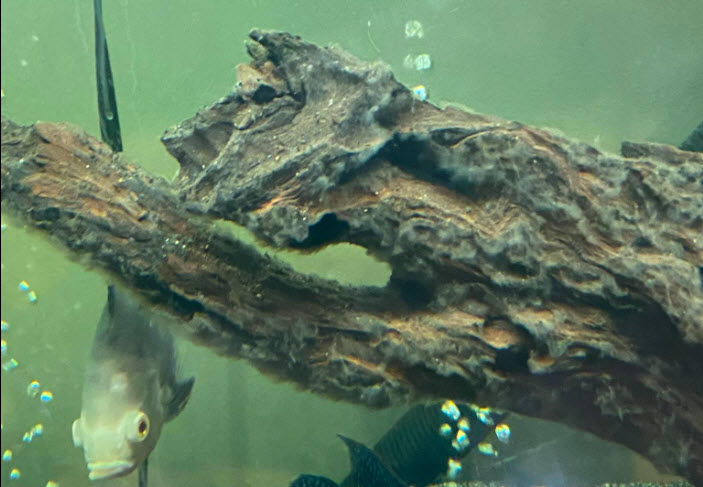
If a fish has a wound or a columnaris infection which creates dead tissue, water molds (saprolegnia), which are found in ALL aquariums, can grow on the dead tissue. This issue is covered in the diseases sections at this link:
Note that water mold on wood will NOT transfer to a fish and infect the fish. Water molds are ubiquitous. There are water molds and spores found all over ANY aquarium. These water molds are just mixed in with the usual algae growth and invisible. If a fish has a bad wound or an ulcer the spores from the water mold can infect it. But any fish so predisposed is going to get the water mold infection irregardless of whether or not there is water mold on wood in the aquarium.
The presence of the water mold does indicate a softer wood which is decomposing rapidly. This rapid decomposition can result in a pretty hefty smell. If things get smelly the only recourse is to remove the wood. It is simply not suitable wood for the aquarium.
If one boils the wood it breaks down the cellulose in the outer layer of the wood and results in a wood which will rapidly get water mold and can get very smelly. Do not boil wood. Since wood will not have fish pathogens on it there is no point to boiling wood.
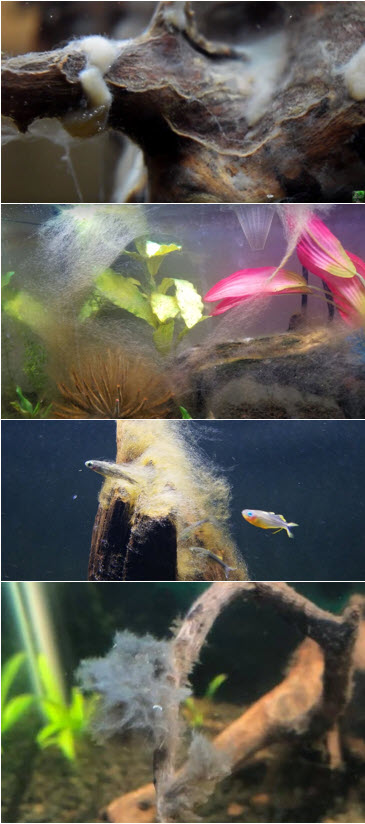
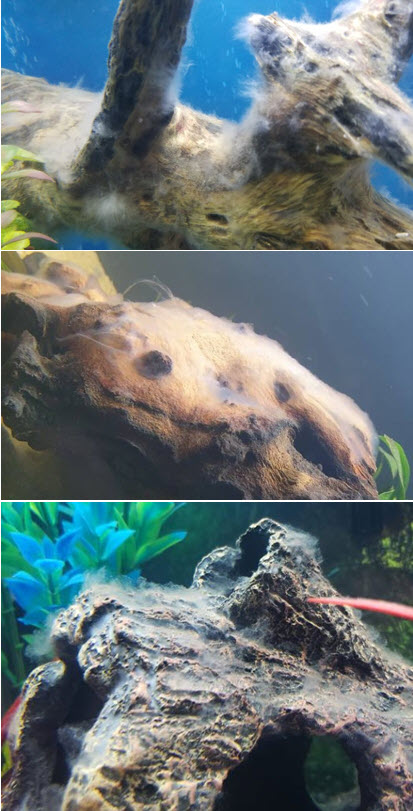
The photo below was a water mold which grew on some wood which had high levels of tannic acid. The water mold absorbed the red tannic acid. Interesting.
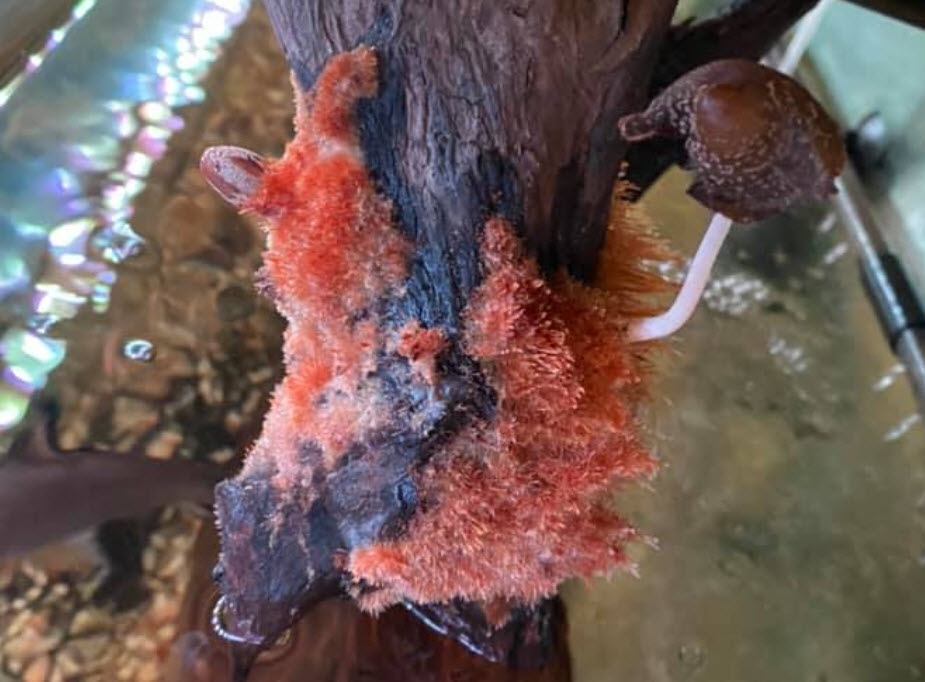
And the photo below is what water mold looks like when it grows on a very dark black wood:

And the colorful purple water mold below was growing on a type of bogwood that has a purple organic compound in it.
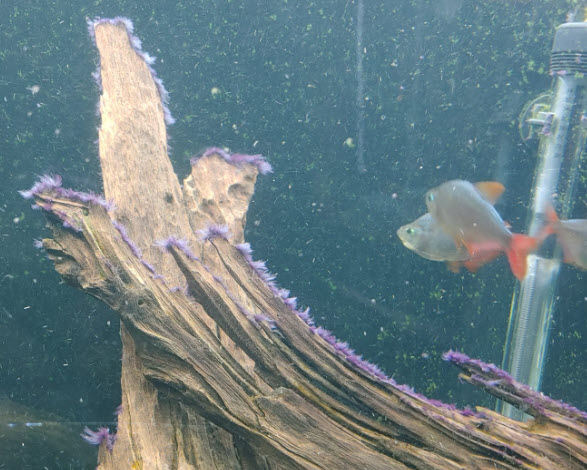
Water molds will also grow very rapidly from a dead fish.
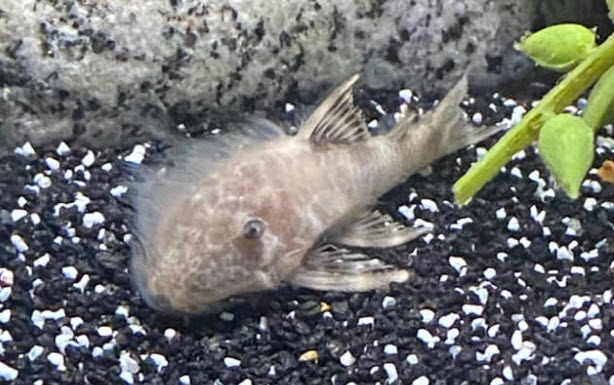
The photo below shows what happens when one uses too large of a substrate in an aquarium. The food drops down into the voids between the pebbles and rot and water mold results.
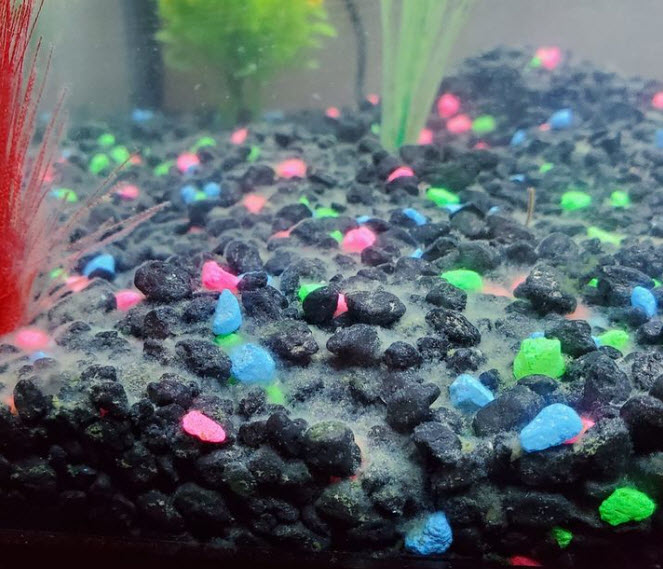
This is a very unhealthy situation for fish as the food generally contains dissolved organic compounds which fuel bacterial growth in the water column. And bacterial growth in the water column is very unhealthy for fish. The water mold is harmless but the bacterial growth isn’t harmless.
As far as “treatment” it is best to just wait the water mold out. Water mold is completely harmless. It will go away in a few months. If one treats one will have to keep treating every few weeks as it will come back. Snails and some fish will eat it.
If one absolutely HAS to treat it is best to use ich treatments like formalin/malachite green (Ich-X, Rid-Ich Plus, Blue Planet White Spot Remedy and Mardel QuickCure). If one cannot get formalin (i.e. Europe), one can use some of the antiseptics such as malachite green, methylene blue, hydrogen peroxide or potassium permanganate to treat. But note all these treatments can be toxic to fish in even slight overdoses. This is one case where the treatment can be much more damaging than the “problem”.
Obviously if the substrate is too large the treatment is to replace the substrate. And if there is uneaten food in the aquarium one is feeding too much. And snails do not need food. Uneaten food releases dissolved organic compounds (DOCs) into the water. Dissolved organic compounds lead to diseased fish.
Note that water mold is often combined with algae in a complex montage that can be brown or even green. Here is one such water mold:
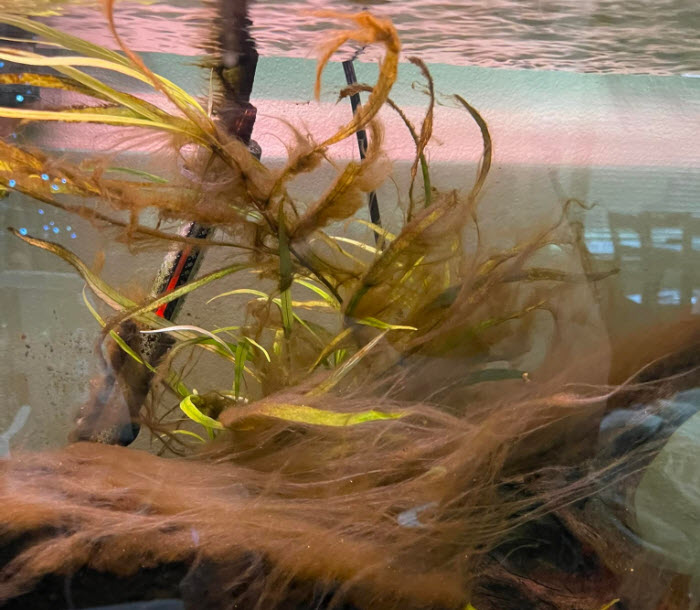
The exact composition in these light brown and light green filaments is difficult to determine without microscopic examination of the filaments. But in most cases they are coming either from dying plants or very soft wood and are probably water molds mixed in with some brown and rhizoclonium genus green algae.
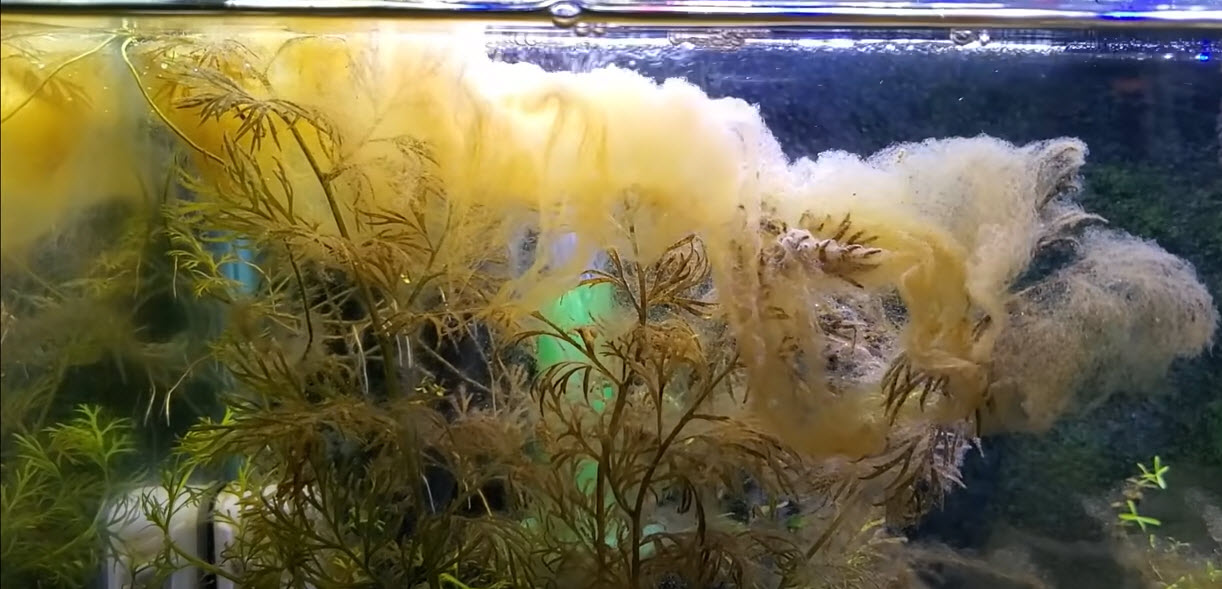
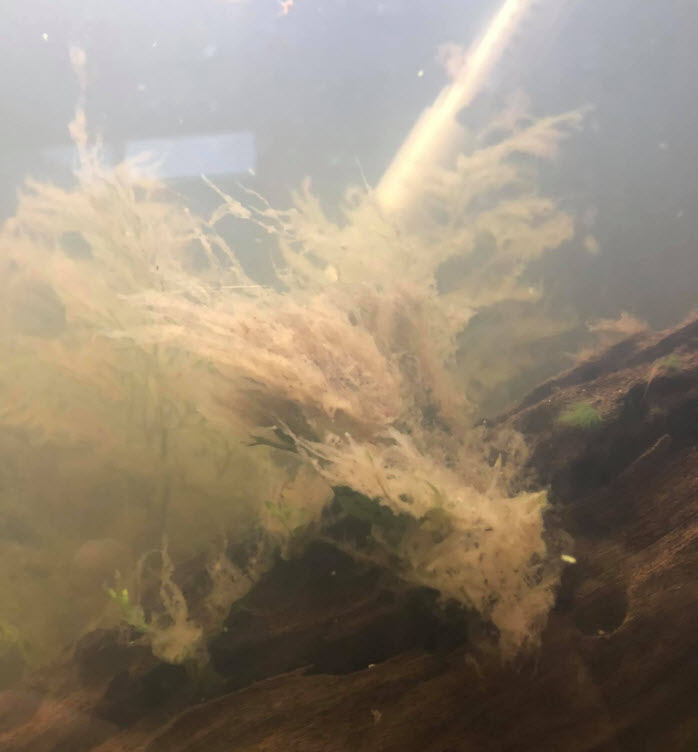
Further Water Mold Science
Note that this is just the surface of the subject of water molds in an aquarium. Water molds and similar organisms can appear in an aquarium in many different variations. Often there is just “white fuzz” on everything. This whole “white fuzz” subject is covered in this link:


